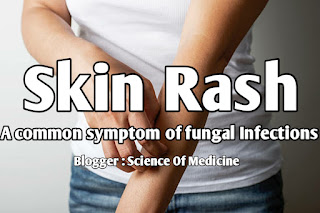Skin Rash : A common symptom of fungal Infections
Skin Rash: A Common Symptom of Fungal Infection
Skin rash is a common symptom experienced by individuals who have contracted a fungal infection. Fungal infections can occur on various parts of the body, such as the groin, feet, scalp, and even the face. While fungal infections are typically not serious, they can cause discomfort and embarrassment, resulting in a diminished quality of life. In this article, we will explore the causes, symptoms, and treatment options for fungal skin rashes.
Fungal infections occur when fungi, a group of microorganisms, invade the skin. These fungi thrive in warm and moist environments, making places like locker rooms, public showers, and swimming pools a breeding ground for their growth. It is important to note that fungal infections are contagious and can easily spread from person to person through direct contact or sharing personal items such as towels, clothing, and shoes.
One of the most common fungal infections that cause skin rashes is tinea corporis, also known as ringworm. Despite its name, ringworm is not caused by a worm. It manifests as a circular or ring-shaped rash with red, itchy, and scaly patches. Ringworm can appear on any part of the body and is highly contagious.
Another fungal infection that causes skin rash is tinea pedis, more commonly known as athlete's foot. This infection typically occurs between the toes and can spread to the soles, causing intense itching, burning, and cracking of the skin. Athlete's foot is often contracted in public spaces where people walk barefoot, as the fungi thrive in warm and damp areas.
Furthermore, tinea cruris, also called jock itch, is a fungal infection that affects the groin area. It commonly affects men and manifests as a red, itchy rash in the groin folds and inner thighs. The itching sensation can be unbearable, and the affected area may become inflamed and develop blisters or ulcers if left untreated.
In addition to the discomfort, skin rash caused by fungal infections can also lead to emotional distress and self-consciousness. The visible symptoms often cause embarrassment, especially when the rashes appear in exposed areas like the face or arms. It is crucial to seek proper diagnosis and treatment to prevent complications and restore healthy skin.
Treatment options for fungal skin rashes include over-the-counter antifungal creams, powders, and sprays. These products usually contain ingredients like clotrimazole, miconazole, or terbinafine, which help eradicate the fungi causing the infection. It is important to follow the instructions carefully and apply the medication as prescribed. In some cases, oral antifungal medications may be necessary, especially for severe or recurring infections.
Prevention plays a significant role in avoiding fungal skin infections. Maintaining good personal hygiene is vital: regularly washing and drying the body, especially the areas prone to fungal growth, helps reduce the risk of developing an infection. It is also advisable to wear clean and dry clothes, particularly in humid weather, and to avoid sharing personal items with others.
In conclusion, skin rash is a common symptom experienced by individuals who have contracted a fungal infection. These infections are contagious and can occur on various parts of the body. While they may not be serious, they can cause discomfort, embarrassment, and affect our emotional well-being. Seeking proper diagnosis and treatment, as well as maintaining good personal hygiene, are crucial in managing and preventing fungal skin infections. By taking proper precautions, we can help keep our skin healthy and fungal infection-free.


0 Comments:
Post a Comment
Subscribe to Post Comments [Atom]
<< Home